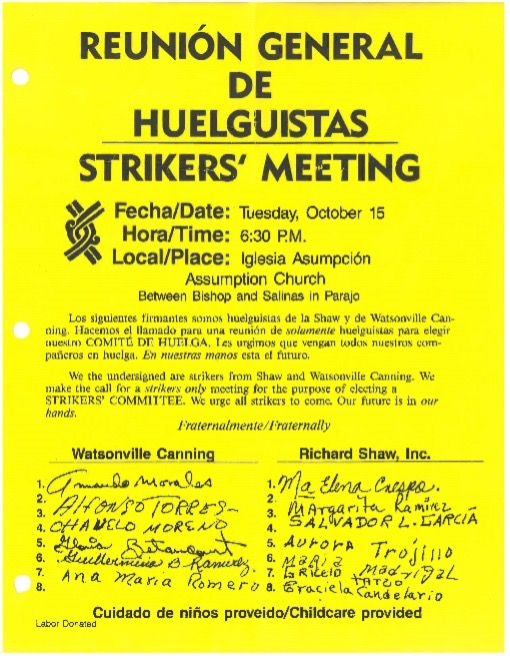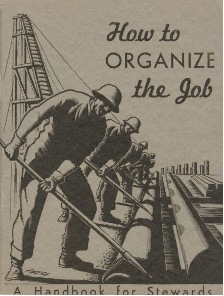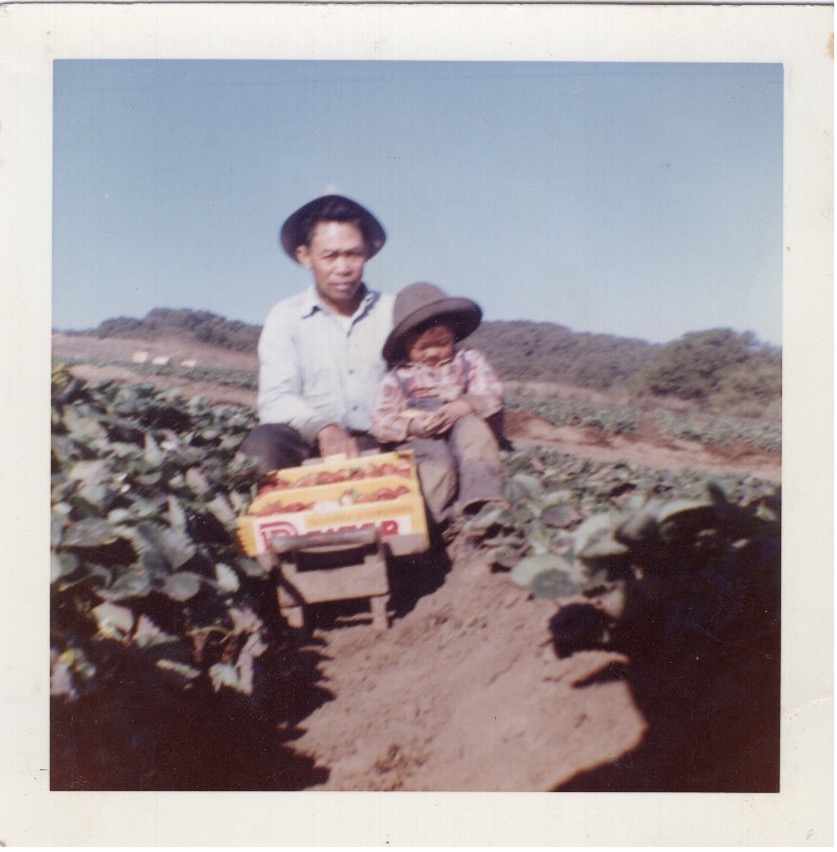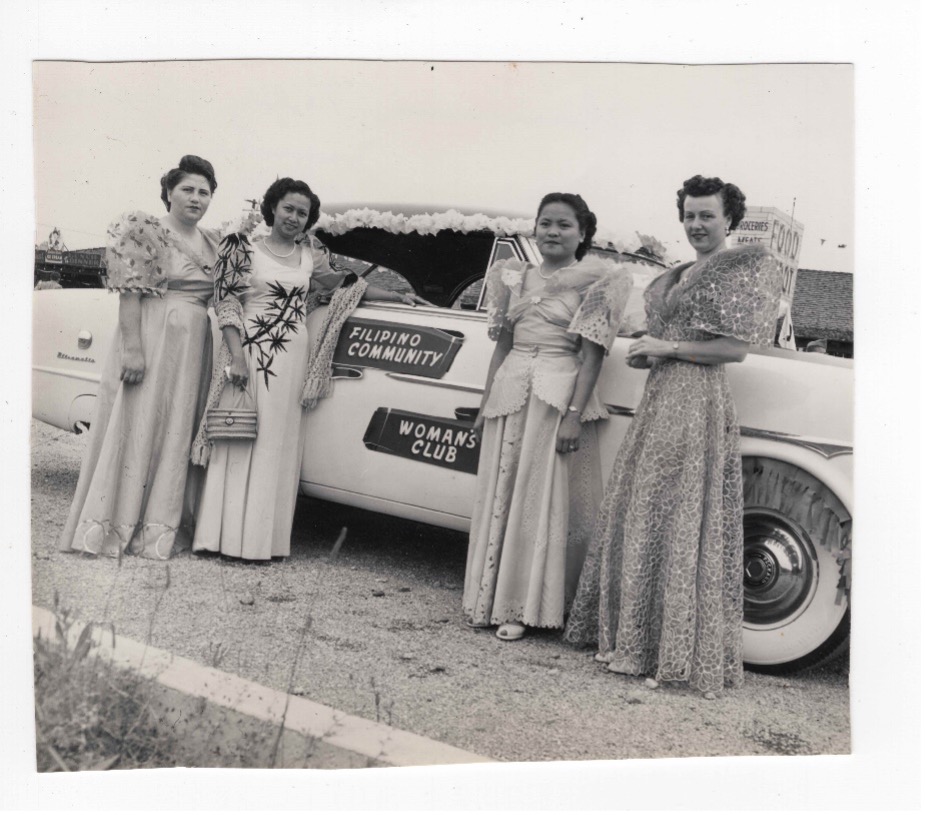Culturally Relevant & High Impact Library Resources: Primary Source Canvas Modules
By Michelle Morton, Cabrillo College

In Spring 2024, I was able to take a sabbatical to create six Canvas modules using primary source materials. The modules focus on local history and use sources that reflect our student population and status as an HSI. I collaborated with Tanya Hollis, Director of the Labor Archives Research Center at San Francisco State University to build modules we can each use at our institutions and share with others through Canvas Commons:
- Two modules on the Watsonville Canneries Strike (1985-1987): This local strike was led by Mexican and Mexican-American women who went up against the cannery owners, the powerful agribusiness machine, and their own union. Over the course of the strike, not one of the 1,000 Watsonville Canning strikers crossed the picket lines. The strike had a big impact on the local community and is an important story in labor history. The module includes photographs, oral histories, flyers, newsletters, newspaper articles, and other materials.
- Filipino American Community and Identity in the Pajaro Valley: Created in collaboration with UCSC and the Watsonville is in the Heart Community Archive, this module provides an overview of Filipino American history in the Pajaro Valley through exploration of labor, businesses and social organizations, foodways, music, and poetry. Sources include photographs, correspondence, oral histories, cookbooks, sheet music, and poetry.
- What is a Union?: An overview of unions, union organizing, collective bargaining, and how workers use strikes to change their working conditions. It highlights labor organizing among warehouse workers, garment workers, farm workers, cannery workers, hotel workers, sex workers, teachers, illustrators, and baristas.

"How to Organize on the Job: A Handbook for Stewards2" Used with permission from the Labor Archives Research Center, San Francisco State University
- Oral History Toolkit: Provides step-by-step instructions for how to prepare to conduct an oral history interview, how to record using Canvas Studio, and how to turn in recordings and transcripts using Canvas. It is designed to make it easier for faculty to incorporate oral history assignments into their courses.
- The Visual Language of the UFW: Uses primary sources to show the United Farm Worker black eagle logo in action and illustrate some of the ways these images were used to rally workers, build solidarity, and create community. Primary sources include flags, banners, posters, labels, buttons, newspapers, and photographs.
- Union Printer Giacomo Patri: Presents the work of union illustrator and teacher Giacomo Patri. Patri taught at the California Labor School and illustrated publications for unions such as the Pile Drivers, Bridge, Wharf and Dock Builders, the International Longshore & Warehouse Union, the Marine Cooks and Stewards Association, and the California Retail Clerk's Association.
I worked with faculty in English, Ethnic Studies, History, Political Science and Sociology to pilot the modules in their courses. Modules 1-4 are available in Canvas Commons, and modules 5 & 6 will be available in Commons Spring 2025.

This project supported our goals as a library and a college to increase access to culturally relevant materials that support our new Ethnic Studies Department and align with our mission as a community college and an HSI. In addition, the modules increase access to Zero-Cost resources that faculty can integrate and adapt as they see fit across different disciplines.
Takeaways

Working Collaboratively is Powerful
Working with colleagues at other institutions, in other departments, and in the community takes time. Finding that time is a challenge for faculty who are already stretched, but collaborating also allows us to distribute the load and work in community to support each other and improve our teaching.
These Materials Matter to our Community
I know from experience that local, culturally relevant materials have an impact on students. I did not realize how important it is to the community that we integrate these materials into our curriculum. I have heard over and over in this process from community members how meaningful it is to have college courses that tell these stories.
Everyone Should take a Sabbatical
There's never a good time to leave your library short-staffed. In our daily work we are overloaded and stretched in many different directions. Sabbaticals give us a rare opportunity to focus, reflect, and follow through. Bringing our deep knowledge and passion for this work to bear on institutional transformation has huge benefits for our libraries, our colleges, and our students.
You can find the primary source modules I created in Canvas Commons searching "Michelle Morton." For questions, email me at mimorton@cabrillo.edu
Works Cited
1. "Reunión General de Huelguistas/Strikers’ Meeting." Flyer from Strike Binders, Agricultural Workers' History Center, Watsonville Public Library.
↩
2. "Mariano and Dan Fallorina at Reiter Berry Farm." Photograph from Fallorina Family Collection, Watsonville is in the Heart: A Community Archive and Research Initiative (accessed June 29, 2023).
↩
3. "Mariano and Dan Fallorina at Reiter Berry Farm." Photograph from Fallorina Family Collection, Watsonville is in the Heart: A Community Archive and Research Initiative (accessed June 29, 2023).
↩
4. "Filipino Women's Club Members on Fourth of July, 1955." Photograph from Alminiana Family Collection, Watsonville is in the Heart: A Community Archive and Research Initiative. (accessed June 29, 2023).
↩